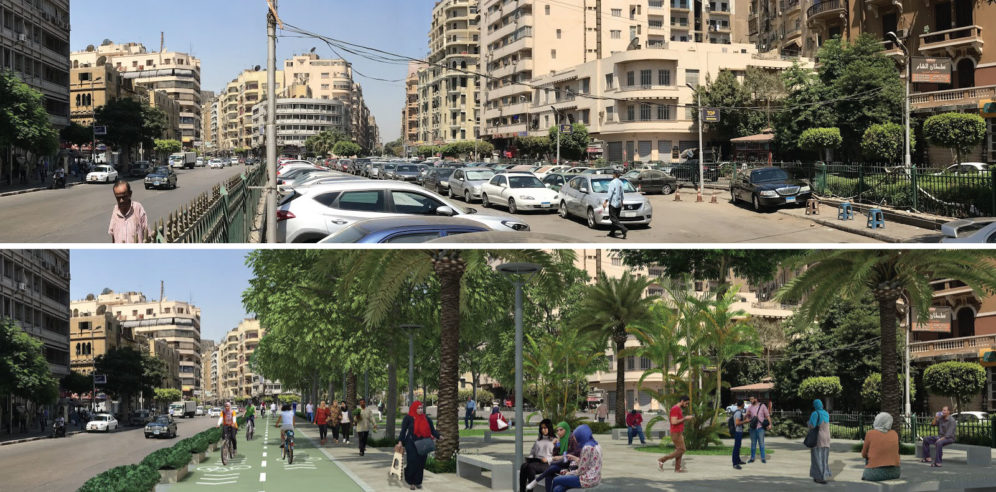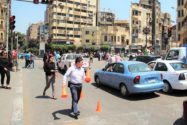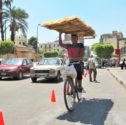 Actual photo of downtown Cairo (top) and a rendering with proposed pedestrian and cycling walkways (bottom).
Actual photo of downtown Cairo (top) and a rendering with proposed pedestrian and cycling walkways (bottom).
November 14, 2018
Paving the Way for Cyclists in Cairo
Bicycle sharing has the potential to improve accessibility by extending the reach of the metro and bus systems and provide a low-cost option for short trips.
Greater Cairo, a megacity of approximately 18 million, faces daunting traffic jams and severely polluted air. Responding to the city’s transport challenges, the Cairo governorate (an administrative region, similar to a state or province), in partnership with the United Nations Human Settlements Programme (UN-Habitat), Drosos Foundation, and ITDP Africa, are planning a bicycle sharing system for central Cairo. In its first phase, the system will have approximately 700 cycle lanes spread across the downtown area. Bicycle sharing has the potential to improve accessibility by extending the reach of the metro and bus systems and provide a low-cost option for short trips.
Critical to the success of the bicycle sharing system is the provision of safe cycle routes in the downtown area. Toward this end, the Cairo governorate has begun the planning process for a network of protected bicycle lanes and safer intersections. On August 16, 2018, the governorate, UN-Habitat, and ITDP organized “Towards Integrated Mobility in Cairo,” an interactive stakeholder workshop aimed at developing bike lane designs for central Cairo. The workshop brought together officials from the Traffic Departments in the Cairo and Giza governorates, New Urban Communities Authority (NUCA), Ministry of Housing and Urban Utilities, traffic impact consultant SETS, and other agencies together with street design expert Michael King.
After an introductory session on the fundamentals of complete street design, the workshop included a field exercise in Mohamed Farid Square in downtown Cairo. Participants set up a live demonstration of bike lanes using cones to assess the impacts for motor vehicles and cyclists. The field exercise received positive feedback from all attendees. Even as the team introduced wider pedestrian refuge islands and dedicated cycle lanes, traffic continued to make its way through the intersection without any noticeable slow-downs.
Check out this video of the field exercise in Mohamid Farid Square.
To conclude, participants toured downtown to view newly renovated buildings and streets recently pedestrianized by the Cairo governorate. Representatives from the governorate explained their goal of further expanding the pedestrian network in downtown Cairo. Following the field exercise, Khalil Shaat, Director of Slum Upgrading in the Cairo governorate, pointed out that the government aims to reduce the number of cars in the city. Mr. Shaat also stressed that the implementation of the project will involve awareness campaigns to build citizen support for the project. ITDP looks forward to supporting the Cairo governorate during the roll-out of the bikeshare system and bicycle infrastructure over the coming year.
Learn more about ITDP Africa here.




